I. INTRODUCTION
For the final project of the course MCEN 5228: Aesthetics of Design, I will be making an electrical guitar, or more specifically, making the body (figure 1) and reusing components of an old electrical guitar. It is dynamic in that it can be operated onto and it produces a reflecting sound through electrical components; and in terms of an aesthetic, the artistic manipulation of the hardwood body will be a challenging objective. This project will satisfy the following requirements:
- Deliverables will be a functional artifact that satisfies an aesthetic of your choice, plus documentation
- The artifact must be dynamic or complete a task (demonstrating form/function balance)
- Has to be aesthetic
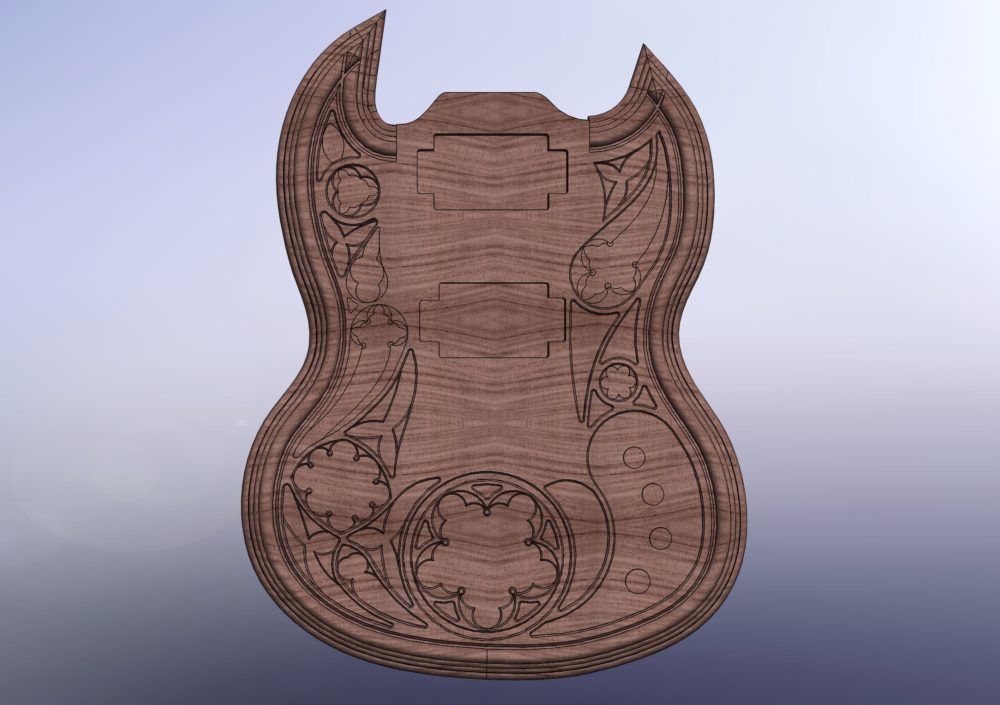
II. INSPIRATION
My friend is currently building an electrical guitar but recently graduated and can’t use the facilities’ resources on campus, so he’s currently having to hand-make it. After discussing the class with him, It is a possible opportunity to help him make the electrical guitar, having both a great function and aesthetic balance. He has an old guitar that he can re-purpose the electrical components (Figure 2) to produce the sound. The main objective, then, would be to build an aesthetic body of the guitar, and then re-purpose the electrical components of his old electrical guitar to produce something aesthetically amazing.
III. VISION
The overall vision would refurbish the guitar in figure 2, mainly the body which is not aesthetically pleasing currently, and then overlaying that aesthetic to all the other components. The aesthetic itself of the body, then is very important and a number of aesthetics have been played in my mind. Looking my planned asthetic, I hope to combine a streamlining aesthetic with a modern matte black aesthetic, both considered at their respective points as very modern aesthetics.
Streamlining aesthetic (figure 3,4) has a very shiny, curvy, and aerodynamic look to it, naturally intrinsic to electrical guitars I feel. The aesthetic emerged in the 1930s and was used in industrial design, namely: railroad locomotives, telephones, toasters, buses, appliances, and other devices conforming to the sleek and modern impression. The electrical guitar itself was developed in 1932, so I believe this type of aesthetic is very fitting for such a piece.



IV. DESIGN
I’ve played around so far with a couple different designs on CAD, drawing them alongside different images that I pulled up from Google and combined the best designs into a body that I’d like (Figure 1)(Figure6). I didn’t spend too much time on hand sketching in order to budget my time, given the limited time and scope of this project. The actual design I plan on using is shown in figure 7, as it is the current file I have compatible with the ITLL CNC machines, which is what I intend to use to carve the guitar, working closing with the ITLL staff and ITLL machine shop faculty. Some post-renders of different base layer aesthetics are seen in figure 8-10.
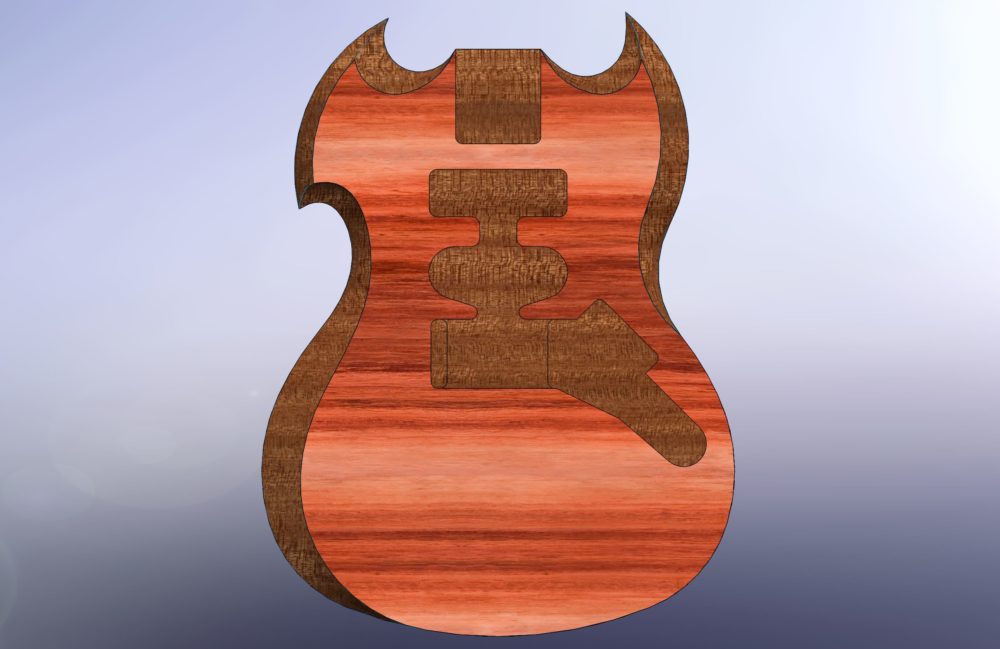
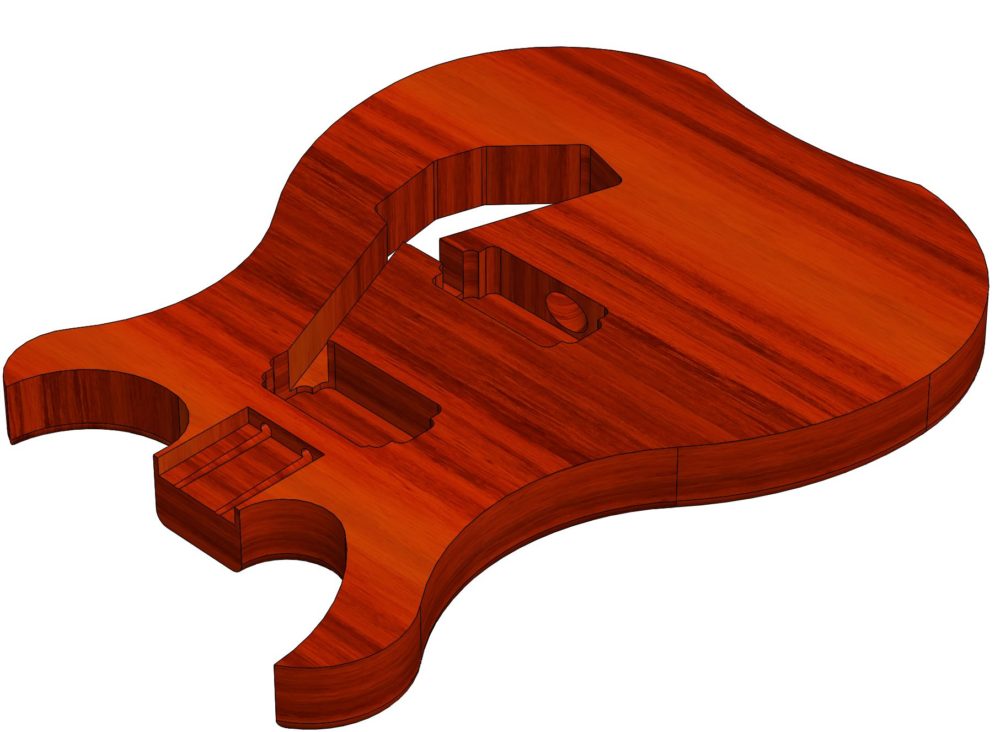
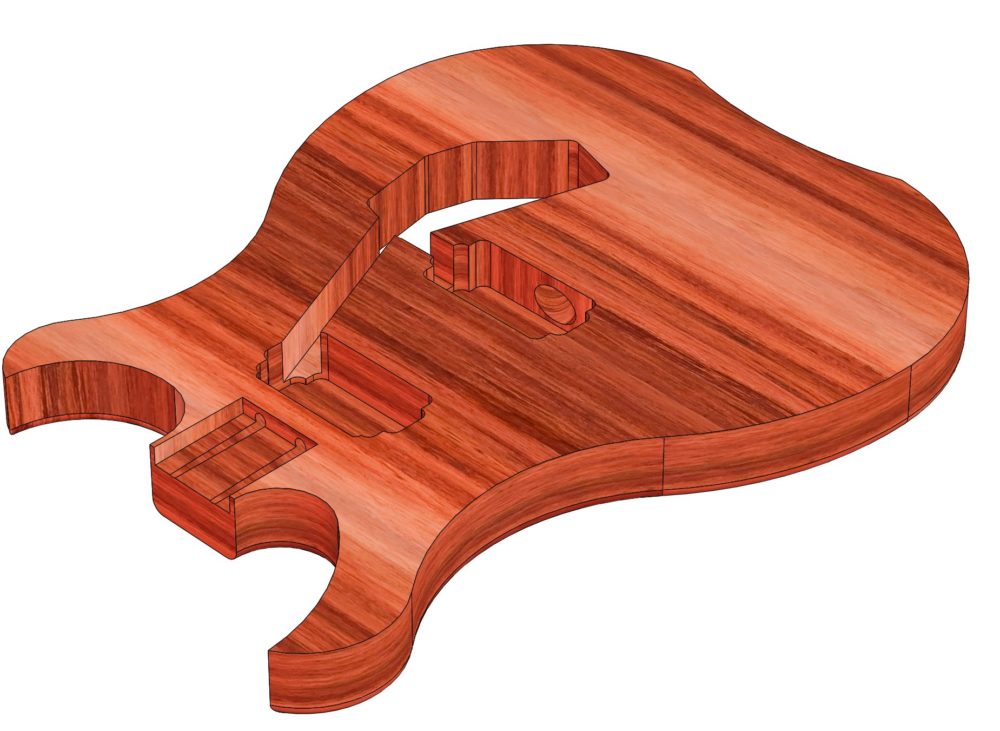
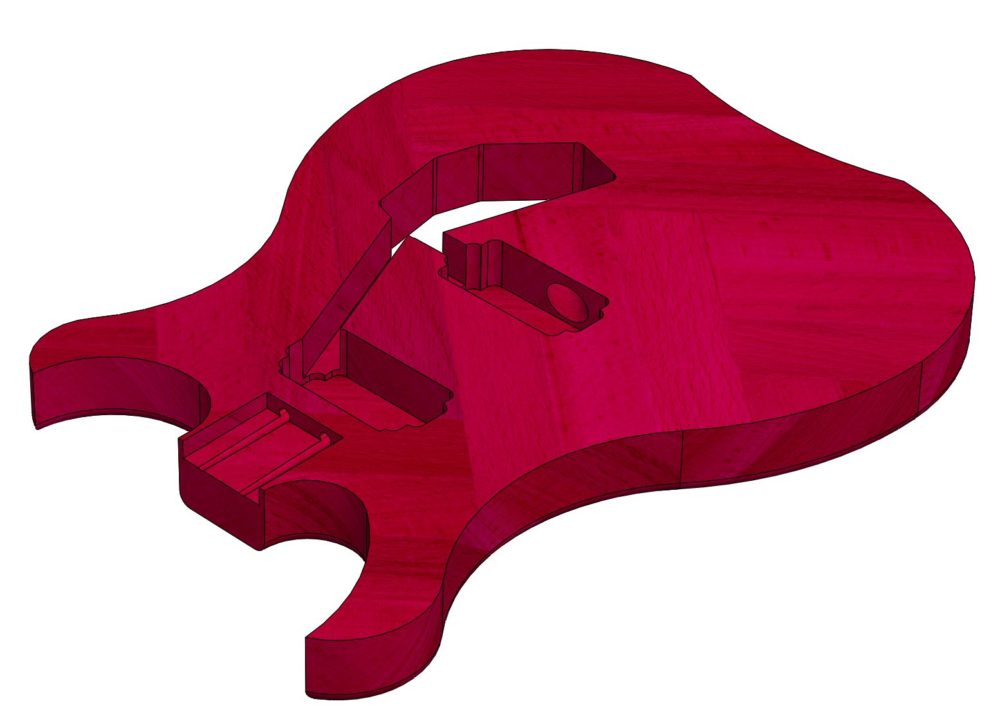
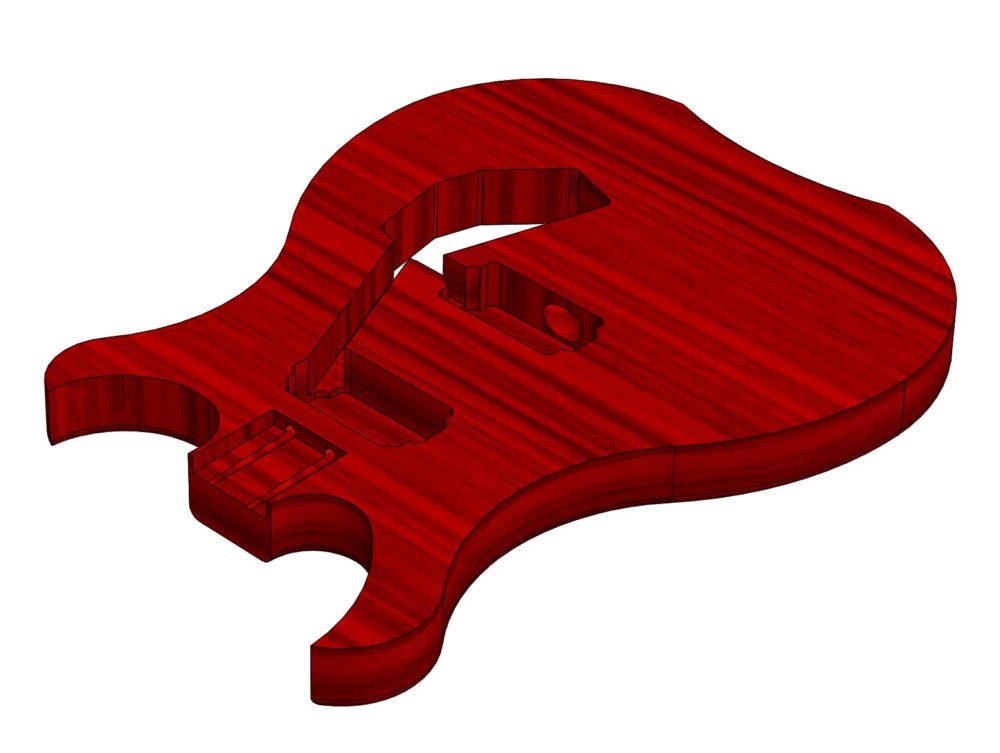
V. MATERIALS
As seen in Figure 10, there are some very nice naturally aesthetically nice woods such as Walnut, Rosewood, and Hardwood, and also Maple. I have been looking at Guitar Wood Experts and looking to order soon[3]. Their woods range from $25.00 to $200.00.
VI. CHALLENGES AND STRETCH GOALS
The current plan is to re-purpose most of the components of an old electrical guitar, except for the body itself. If I have more time, then stretch goals would obviously include making the other parts as well, such as the head (figure 11) (figure 12).


VII. CONCLUSION AND DESIGN METRICS
To achieve project completion, I would essentially have a working function guitar with a completed and aesthetic body. Ideally the sound that it produces would be of quality, but if it produces any sound – that would be a success.
VIII. REFERENCES
[1] Filler, Martin. “Streamline Dreamer.” The New York Review of Books, www.nybooks.com/daily/2013/11/13/streamline-dreamer/. [2] Hemmings.com, www.hemmings.com/blog/2014/05/29/1930s-auto-design-art-deco-and-streamline-moderne/.[3] “Home.” Guitar Wood Experts, guitarwoodexperts.com/electric-guitar-wood/?sort=featured&page=4.
[4] “Electric Guitar.” Wikipedia, Wikimedia Foundation, 11 Mar. 2020, en.wikipedia.org/wiki/Electric_guitar#/media/File:Electric_Guitar_(Superstrat_based_on_ESP_KH_-_vertical)_-_with_hint_lines_and_numbers.png).

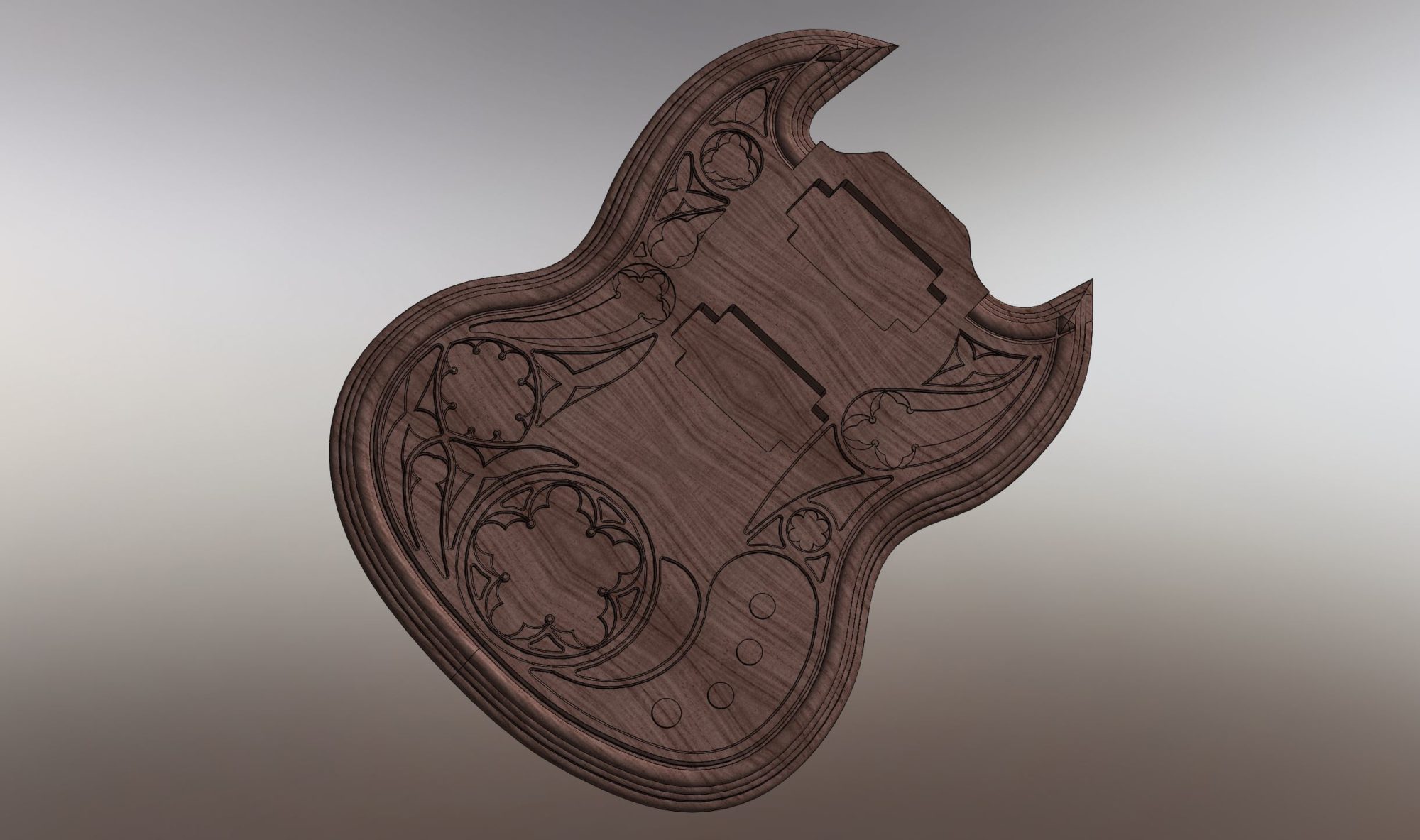
5 Comments. Leave new
As a statement of meaning, I really like that Will examined wildly different aesthetics at the outset of the project and also carried their consideration through to making two different CAD models.
Will,
Statements of meaning:
I like your slide layouts. They highlight your designs and inspirations.
I like his in-depth cad models and the designs he put on them.
Questions of the artist:
How do I save my project? – Ask ME Department if they can get you access.
How difficult is it to move the electrical components from the old body to the new body?
Hi, Will,
This is an excellent idea, helping your friend to build an instrument. The only concern that I have will just be the access to CNC machine, since ITLL is closed for the rest of the semester. Maybe instead of carving from the CNC machine, you can try to do it by hand? (While that is kind of against the intention of the project, but I guess you got to work your way around this) I know that in BTU of ATLAS, there are tools for wood work, if you had prior experience doing that, maybe you can use tools and carve out the design by hand? Oh, another that you can possible try it out, is to utilize the online CNC fabrication websites. I don’t know how well that would turn out to be or the price range, and you can check it out and possibly try it out! Good luck with your project!
Xiang
Hello Will! Statements of Meaning: this project looks really awesome and I can’t wait to see how it turns out. I think you have a great vision for the aesthetics of the artifact. Neutral Questions: do you have any ideas on how to change the scope of this project given the closing of the ITLL? Do you have access to any other resources? Permissioned Opinions: I think it’s possible to combine the streamline look with the matte black. Implementing the aerodynamic curvature with a matte black finish I think would be a really interesting aesthetic.